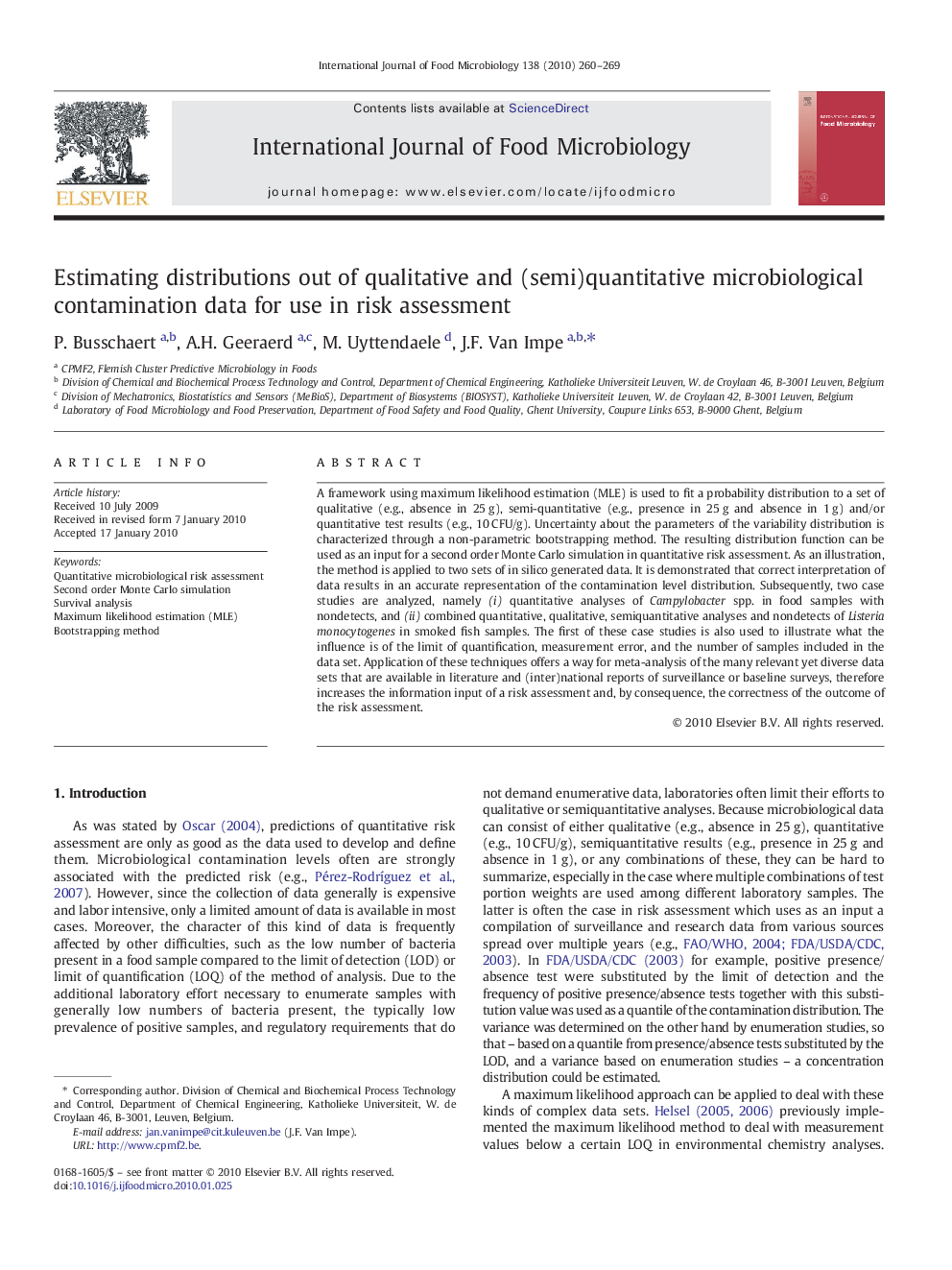| Article ID | Journal | Published Year | Pages | File Type |
|---|---|---|---|---|
| 4368287 | International Journal of Food Microbiology | 2010 | 10 Pages |
A framework using maximum likelihood estimation (MLE) is used to fit a probability distribution to a set of qualitative (e.g., absence in 25 g), semi-quantitative (e.g., presence in 25 g and absence in 1 g) and/or quantitative test results (e.g., 10 CFU/g). Uncertainty about the parameters of the variability distribution is characterized through a non-parametric bootstrapping method. The resulting distribution function can be used as an input for a second order Monte Carlo simulation in quantitative risk assessment. As an illustration, the method is applied to two sets of in silico generated data. It is demonstrated that correct interpretation of data results in an accurate representation of the contamination level distribution. Subsequently, two case studies are analyzed, namely (i) quantitative analyses of Campylobacter spp. in food samples with nondetects, and (ii) combined quantitative, qualitative, semiquantitative analyses and nondetects of Listeria monocytogenes in smoked fish samples. The first of these case studies is also used to illustrate what the influence is of the limit of quantification, measurement error, and the number of samples included in the data set. Application of these techniques offers a way for meta-analysis of the many relevant yet diverse data sets that are available in literature and (inter)national reports of surveillance or baseline surveys, therefore increases the information input of a risk assessment and, by consequence, the correctness of the outcome of the risk assessment.
